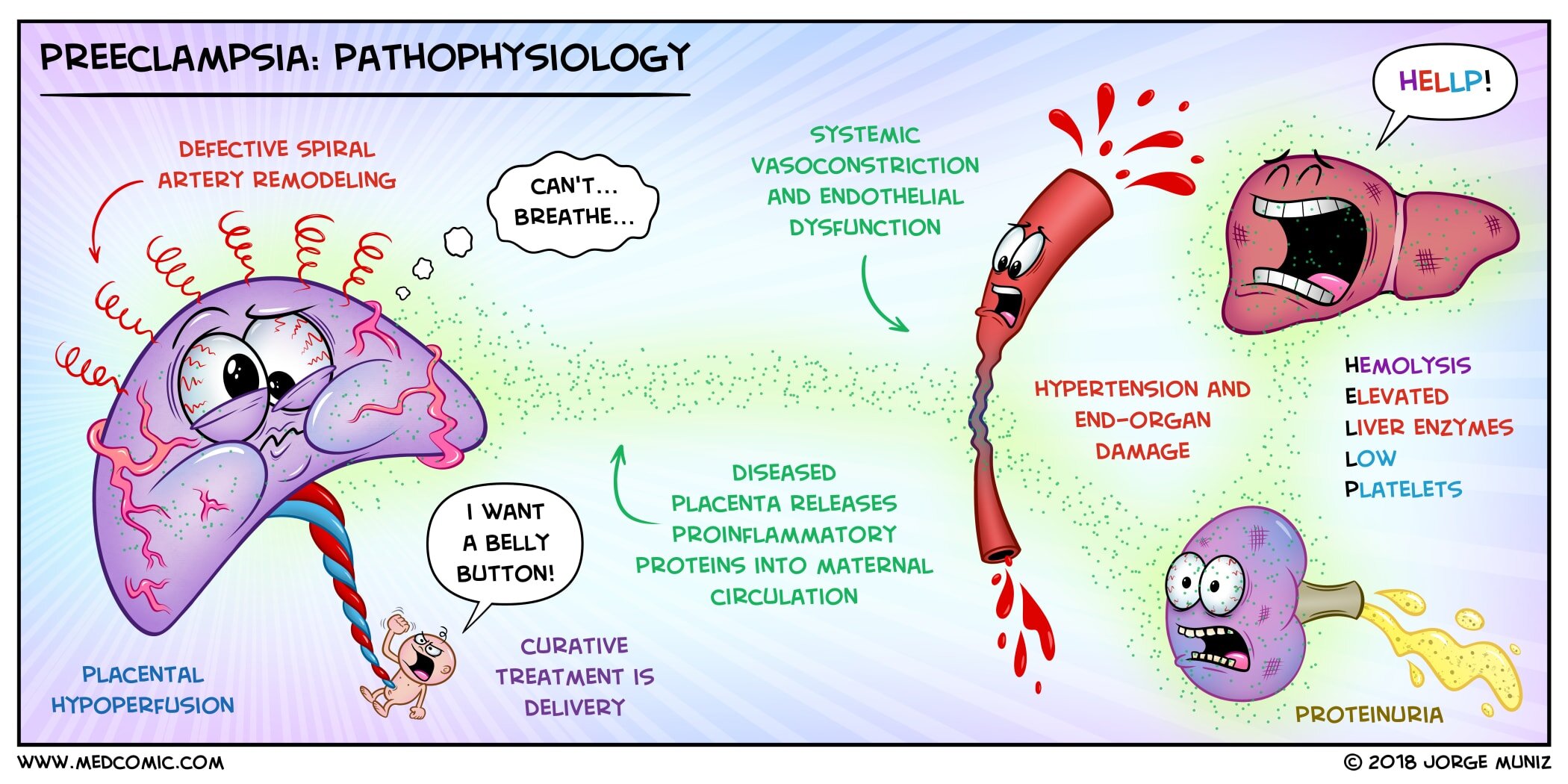Preeclampsia: Pathophysiology
General Features
Preeclampsia is classically defined as the new onset of hypertension and proteinuria after 20 weeks of gestation.
New onset hypertension with significant end-organ dysfunction (with or without proteinuria) after 20 weeks of gestation also satisfies the diagnosis of preeclampsia.
Severe headache, epigastric or right upper quadrant pain, visual disturbances, thrombocytopenia, impaired liver function, renal insufficiency, pulmonary edema
HELLP syndrome: Hemolysis, Elevated Liver enzymes, Low Platelets
Edema may or may not be present.
Eclampsia = preeclampsia + seizures
Risk factors include nulliparity, past history of preeclampsia, preexisting hypertension or renal disease, autoimmune disease, very young or advanced maternal age, diabetes, and obesity.
Curative treatment is delivery
Pathophysiology
Genetic and immunological factors
Defective spiral artery remodeling during pregnancy
During a normal pregnancy trophoblast cells invade the myometrial segment of the spiral arteries to cause transformation and dilation of the arteries.
In preeclampsia there is insufficient trophoblast cell invasion, which causes the spiral arteries to remain narrow and leads to placental hypoperfusion.
Diseased placenta releases proinflammatory proteins
Hypertension
Vasoconstriction
Endothelial cell dysfunction
Formation of thrombi
End-organ damage
